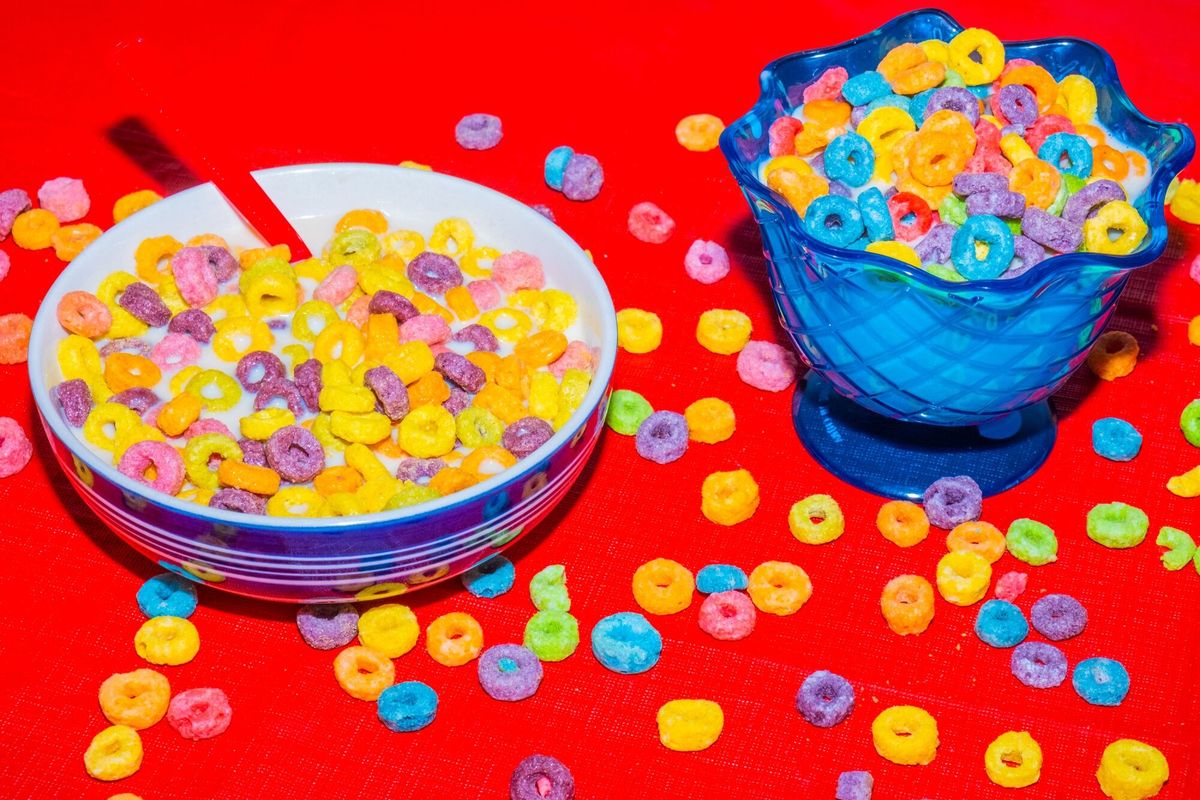Froot Loops cling to vivid colors as food makers face dye bans

Froot Loops will keep their artificially brightened colors. Some Pop-Tarts will lose them. Welcome to the ongoing experiment that is the American breakfast.
The two companies formed after Kellogg Co. split last year are now facing new regulations on the use of artificial food dyes, leaving them to chart their own courses in a controversial area for highly processed foods, especially those designed for kids
Snack company Kellanova, which makes Pop-Tarts and Rice Krispies Treats, is working to replace artificial additives in some of its products with natural alternatives after the dye in them was banned by one state. But breakfast-cereal maker WK Kellogg Co. is keeping its dyes because they haven’t yet run afoul of new legal restrictions, even though the company found a way to do without these colorings for essentially the same products sold in Canada.
Kellanova’s actions may be a harbinger of what’s to come as food companies navigate legislation on the use of the dyes. Last year, California banned certain chemicals used in foods and candy as of 2027, after saying they caused health problems. Among those was food coloring Red No. 3, which is already prohibited from most uses in Europe. This year, a proposed bill in the state would ban seven more dyes, including Red No. 40, Yellow No. 5 and Blue Nos. 1 and 2, from its public schools because they have been linked to cancer, neurobehavioral issues and hyperactivity. Other states are now considering bans of their own.
Now Kellanova is trying to find substitutes for Red No. 3, which is in MorningStar Farms veggie bacon, some Pop-Tarts Bites and Eggo waffles of the unicorn-cotton-candy variety. “Our R&D team is working to find appropriate alternative ingredients,” a spokeswoman said in an email.
The company is also looking at options for Red No. 40, found in certain Pop-Tarts and Rice Krispies Treats, so that they can be in compliance should the time come.
WK Kellogg’s Froot Loops and Apple Jacks both use Red No. 40, not Red No. 3, so the cereals aren’t (yet) affected by legislation. And it’s resisting change because Americans simply don’t like duller options.
The company had spent “significant resources” looking into what kinds of colors consumers around the world want in their cereals, according to an April 2024 position paper viewed by Bloomberg News. “There is better reception to our cereal recipes that utilize natural-color alternatives within the Canadian market, than in the US,” it states.
Still, if at some point a state law hits its cereal portfolio, the company will have to find alternatives. “When faced with any regulatory changes that do apply to us – federal or state – WK Kellogg Co would of course make the required changes to ensure compliance,” the company told Bloomberg.
Every major food manufacturer will have to figure out what these bans mean for them, said Sarah Gallo, vice president of product policy at Consumer Brands Association, an industry trade group. The industry opposes a “patchwork” approach where each state makes its own laws, Gallo said, and prefers that they all operate under federal Food and Drug Administration regulations, which says the dyes “are safe when used properly.” The group is in touch with California lawmakers to share that perspective, she said. “Food safety is the No. 1 priority for our member companies,” she said.
WK Kellogg maintains that more than 80% of its cereal sales come from products that don’t contain the dyes at issue. But it has continued to use them in kid-targeted breakfast food, including limited-edition options like glitter-covered Caticorn and brightly colored Baby Shark cereals, and the still available blue and red ICEE Cereal.
“It’s one thing to test preferences with existing cereals, but an entirely different set of unethical principles to create brand new cereals with dyes right from the get-go,” said Vani Hari, an activist and author known as Food Babe, who is working with a coalition to pressure WK Kellogg to remove the dyes.
The bans didn’t appear out of thin air – questions about food-dye safety have swirled around the industry for years. Nearly 10 years ago, companies said they’d take them out, not out of safety concerns but to align with consumer preferences. In 2015, Kellogg said it hoped to remove artificial dyes from its recipes, Kraft said it would take them out of its iconic macaroni and cheese and General Mills said it would take them out of cereals. The following year, Mars said it would remove “all artificial colors from its human food products.”
Macaroni and cheese was the lone success story: Kraft Heinz announced in 2016 that it hadn’t been using the dyes for months, replacing them with spices like turmeric and paprika, and consumers were none the wiser.
But Kellogg, General Mills and Mars had no such luck. Dyes came back to Trix cereal in 2017. By 2021, Skittles maker Mars had thrown in the towel as well, saying consumers wanted “the current vibrant palette” that only artificial dyes could offer.
Mars found that consumer expectations “differ widely across markets,” so it was using “locally tailored” approaches, a spokesperson told Bloomberg. General Mills didn’t respond to a request for comment.
Calley Means, co-founder of medical-costs advisory group Truemed and another coalition member pressuring WK Kellogg to remove the dyes, said the fight wouldn’t end there. “We are focused on Kellogg,” he said, “and then we’ll move on to the next one.”